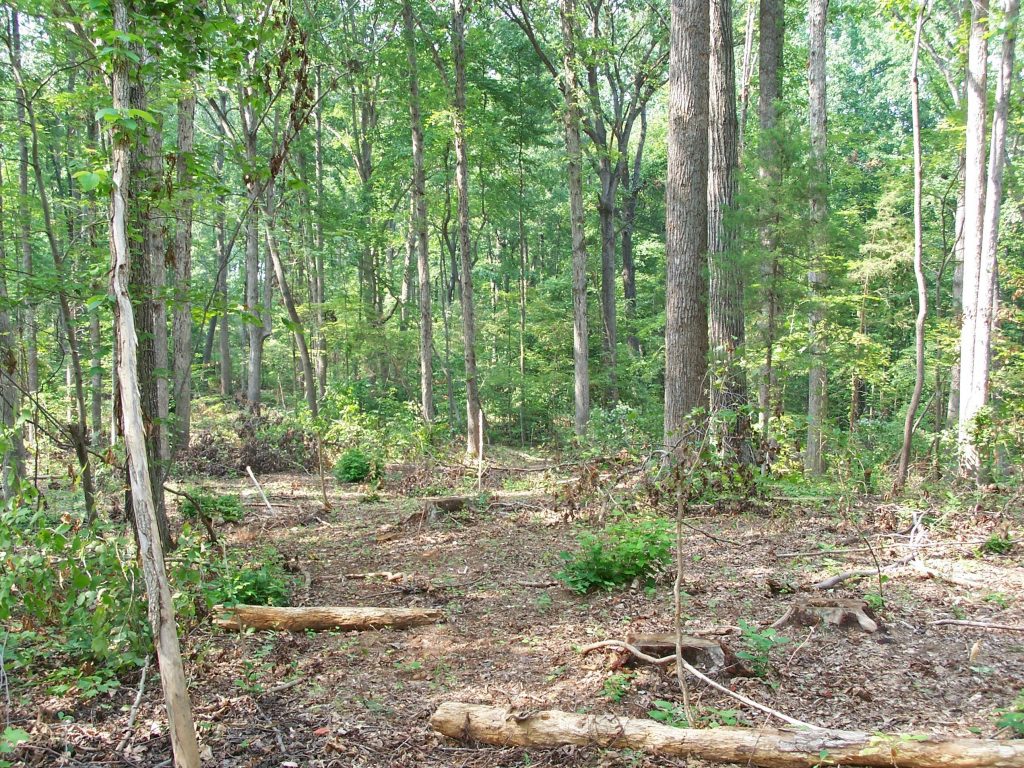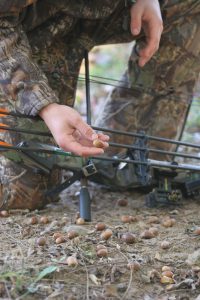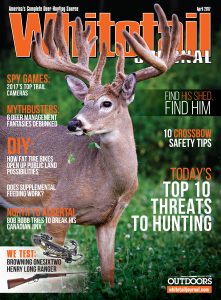Hunters sure can be a gullible bunch. We believe that magic potions and powders will grow bigger antlers, and that we can achieve complicated goals with a few simple steps.
There’s nothing wrong with spending our own money on what amounts to snake oil. If it gets us in the woods more frequently and keeps our confidence high, it’s a successful product, right?
But a number of myths regarding deer and habitat management don’t help us see more or bigger deer. In fact, they may actually decrease our success. Whether we spend unnecessary money or undertake some management activities that actually do more harm than good, there are countless hunters who believe something because they saw it on the Internet.
Take this Facebook exchange, for example. A hunter on a discussion group posted a trail camera photo of a spike and posed a common question: “Should I take him out?” A few hunters insisted he should let the young deer walk and see what happens in a few years. The rest? “Don’t let him breed,” wrote one hunter. “Get him out of the gene pool,” “He’s got to go” and “He’ll never amount to anything,” posted others.
The Genetic Myth
Sorry, guys. You can’t shoot your way to a herd full of Booners. There are too many variables at play for anyone to influence genetics in a wild deer herd through selective harvest. A study by Mississippi State University deer researchers used computer modeling to determine that it would take at least 20 years to show even a fraction of a difference in the number of antler points and the Boone & Crockett score in a 4½-year-old buck. In other words, it’s simply not possible.
“There are so many different factors at work,” says Mississippi State University professor of wildlife ecology Dr. Steve Demaris. “Everything from the environment to hunter harvest influences antler size. Genetics is just one part of the equation and it’s the one part we have virtually no control over.”
Perhaps more important, there is no concrete definition of a “cull” buck. Ask a dozen hunters to define a genetically inferior buck and you’ll likely get an equal number of answers. Is it a 2-year-old with less than eight points, a yearling spike or maybe an older deer with misshaped antlers? A buck with an odd-shaped antler may simply be a buck that somehow injured that antler during the velvet stage. Injuries to a buck’s body can also result in unusual antler growth for as little as one season.
The spike myth has also long since been put to rest. A number of research projects found that while some spikes won’t grow into a wall-hanger, some actually will. The problem is, most of us can’t tell which ones are future giants and which ones will always be ho-hum bucks. Most important, once he’s been shot, we’ll never know what he might have been in a year or two. Of course, shooting bucks with small antlers automatically increases the average antler size on your property — for that season. All that really accomplishes, though, is an overall reduction in buck numbers.
What many hunters fail to remember is that bucks only contribute half the genes to a fawn. A doe contributes the other half. And no hunter can judge the genetics of a live doe simply by looking at her.
If that’s not enough, consider this: The buck you remove from the landscape has probably already passed on his genes. A number of studies have found that bucks of all ages, including yearlings, will breed.
If you really want bigger antlers there’s a simple solution: Stop shooting young bucks. Nothing plays a larger role in building a herd with bigger antlers than allowing the average age of bucks to increase.
It’s Mostly Salt
But what about those products we can pour on the ground? Mineral licks, liquids and powders all have images of giant bucks on the packaging, so they must contribute to antler growth. They don’t, according to a number of research projects. One, conducted by scientists at Mississippi State University, found no evidence of antler size improvement where they are available in a free-range herd.
Another study, conducted by researchers at Auburn University, gave one group of captive deer mineral supplements and another group no supplements. Both groups were fed the same diet, otherwise. There was no difference in antler or body size at the end of the four-year study.
So why do deer love them so much? Salt. Most mineral blocks and other supplements are made up almost entirely of salt. In fact, other research has found that deer rarely touch pure mineral products. However, they readily ate or licked products with a high salt content.
That’s because they want the salt, particularly in the spring and summer, when natural foods have a high water content. The more they eat, the more deer urinate. That leads to a depletion of salt in their bodies, so they use mineral/salt blocks as an easy and readily available source.
Even if deer like them, don’t expect to kill a buck over a salt block. A study conducted by researchers with the University of Nebraska found that does were more likely to visit supplemental mineral sites overall, and use by both bucks and does dropped dramatically in the fall.
What About The Trees?
If mineral blocks and powders don’t really help deer, what about fertilizing the oaks on our land? Acorns are an important part of a whitetail’s diet and every skilled hunter knows a whitetail will walk through a food plot to get to freshly fallen acorns. So why not give the trees a nutritional boost to help them produce more and better nuts?
It can work with food plots, but it doesn’t have any impact on acorn production, says University of Tennessee wildlife management professor Dr. Craig Harper. He led a study that examined acorn production for oaks that were given a regular dose of fertilizer and compared them to trees that weren’t. There was no difference in acorn abundance or production frequency.
What did help, according to Harper, was “releasing” the crowns. By cutting down other species of trees surrounding the oaks, they were able to produce a bigger crop of acorns because they were able to increase the size of their crowns. Here’s the kicker, though: They did not produce a crop more frequently. Despite efforts to better understand oaks and acorn production, no one really knows why the trees produce nuts so heavily one year, sparsely another and none at all in other years.
A better option is to practice timber management. Cut “bad” trees; save the good ones. That allows sunlight to reach the forest floor, which results in a flush of new growth. A wide variety of plants will not only provide high-quality food, they will eventually grow tall and thick enough to create great bedding and fawning cover.

Research has shown that removing competing trees around the best oaks will allow those oaks to expand their crown and produce more acorns. Thinning your forest also creates better habitat in lots of other ways.
Bucks and Does
If you can create better habitat, can you create an ideal buck-to-doe ratio? In an ideal setting, we’d see one buck for every doe. That almost never happens and it’s an unrealistic goal. First, there’s no biological reason our herd ratios need to be 1:1. Sure, the rut would be as crazy as you would expect it to be if each buck had to search far and wide for a willing doe, but even with a high doe-to-buck ratio, those does would likely get bred sooner or later. Of course, an overabundance of does can result in an extended breeding season, which will result in late-born fawns. They’ll be smaller and in some regions they may have a more difficult time surviving winter.
That’s rare, though, and can be solved through increased harvest of does. But it’s important to first know how many female deer you actually have. Pre-season trail camera surveys are the best method for counting your herd.
Even with such information, don’t get too concerned if you have a disproportionate number of does. What many hunters don’t understand is that it’s virtually impossible to get beyond a 1:3 buck-doe ratio without an incredibly high annual buck harvest. That’s because half of all fawns are males. Even if a post-hunting season ratio is 10 does for every buck, the next crop of fawns will lower that imbalance. Again, increase your doe harvest and lay off the bucks if your goal is to see more bucks the next season or two.
A Food Plot Is Habitat Management

Scientists still don't know which factors contribute to bountiful or failed acorn crops, but they do know fertilizing individual trees has no effect.
Planting a food plot seems like a great way to provide high-quality food to your deer herd when they need it most. In some cases, it can be. Really, though, most hunters plant food plots so we can draw deer to a specific location during hunting season. They eat the plants, of course, but don’t assume deer need a field of clover or brassicas to survive. What did they do before the very idea of a food plot entered the deer hunting equation?
A single food plot, or even several, is typically just a fraction of the total habitat equation and will have an equally proportionate impact on your deer herd. That’s why those who want to provide high-quality forage need to consider the entire landscape. Deer don’t live off food plots alone. And they need more than food. Escape and fawning cover are critical factors in annual survival rates.
The simplest solutions are to remove the plants deer don’t eat and increase the native plants they favor. Fescue, for instance, can make up the vast majority of the plant life in a field. Kill it. Wait until late fall and then spray the field with glyphosate, the active ingredient in Roundup. A flush of new plants will grow next spring, many of them high-quality deer foods. Even better, they will reseed themselves, saving you money in the long-run. Also spot-spray other invasive plants like tree-of-heaven and Johnson grass.
Also consider an active timber management program. Cut trees that don’t provide food and leave those that do. Oaks, in particular, should remain. Cutting big trees like sweetgum and poplar allows a wide variety of shrubs, vines and beneficial grasses to grow. They provide food and cover.
You Can’t Do Anything
The biggest management myth is that improving your deer herd and your habitat is too expensive, too complicated or too ... something. Hunters who have smaller tracts can get even more discouraged. Don’t be.
The first step is to understand that nothing worth doing is easy. Next, do what you can with what you have. Most important, don’t fall for the other management myths. There are no magic potions or shortcuts to achieving your goals. Even if you saw it on the internet.







